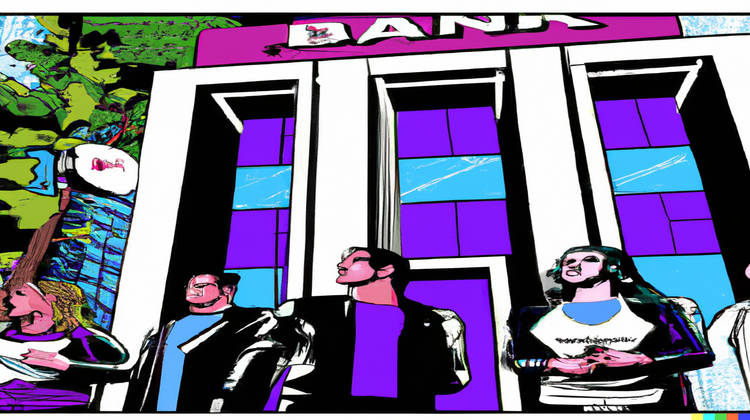
We’re a week shy of the beginning of Q4 2023 and as this tumultuous year comes to a close, it is helpful to take stock of what the banking industry has planned for next year.
What opportunities are on the horizon for the industry and what risks do its banking execs foresee? Is 2024 going to be the year for cannabis banking? And finally how close are we to an open banking system in the US?
The risk and opportunity in AI
While this year was challenging for banks, it was a boon for those working in AI. Generative AI has already caught the attention of some in the industry and has poured more fuel on the AI fire.
69% of banking execs expect AI to be the most influential technology in the next 5-10 years, followed by BaaS (42%) and digital currencies (32%), according to a new report by CCG Catalyst, which surveyed 108 C-level bank execs. More than half of these execs also see AI as the biggest opportunity for the coming decade. Already major banks are using Generative AI to optimize their bank-office workflows.
But for banking, AI is a bit of a double-edged sword. 44% of banking execs think AI represents the biggest risk for their bank in the coming decade. On the one hand, AI promises to personalize financial products and optimize their delivery, but on the other, it’s also a boon for the banking industry’s diametrically opposed foes: fraudsters and bad actors. As tools like Generative AI become publicly accessible, bad actors have the technology to game security measures set in place by banks after years of investment and research. Now, bad actors can more easily create fake identities, and even use AI tools to impersonate consumers on calls, making it difficult to differentiate malicious requests from genuine ones.
The risky business of digital currencies
Rivaling concerns about AI are digital currencies. This could be due to a number of reasons. First, there are concerns about the threat digital currencies like Bitcoin present to the traditional financial ecosystem. A classic case of FOMO is leading many to develop plans for implementing CBDCs.
But these come with their own risks. For example, CBDCs will allow consumers to hold accounts in legal tenders rather than in liability like they do in a bank. This may cause consumers to prefer CBDCs instead of banks, since central banks cannot default on their obligations. Moreover, other digital currencies like Bitcoin have gone through their own volatile cycles which has caused considerable uncertainty about their stability.
Banking in the weeds: What’s up with Cannabis Banking?
The cannabis industry is not out of the weeds yet (pun, strongly intended). The legal sales of cannabis reached $25 billion last year, but businesses in the industry remain largely ignored. Some companies like Leaflink are stepping up to pick up the slack by powering payments in the space. But banks are unlikely to touch the sector until there is more federal regulatory clarity pertaining to the industry. Only 4% of banking execs report providing cannabis banking services at the moment – 19% report that they are not planning on doing so in the future, too.
Meanwhile, the Senate is expected to vote on a cannabis reform banking bill next week. “This legislation will help make our communities and small businesses safer by giving legal cannabis businesses access to traditional financial institutions, including bank accounts and small business loans,” said Chuck Schumer, Democratic Senate Majority Leader about the bill.
Opening up about Open Banking
The US is late in jumping on the Open Banking bandwagon, which is currently being driven by European countries and the UK. But the US may catch up once the CFPB’s proposed rule on Open Banking comes out. Banks in the US are poised to take advantage of regulatory clarity on the subject, with 17% saying they are willing to provide open data access through third parties and 48% showing interest in working with select third-parties for increasing data access.
The CFPB is expected to propose its rule change regarding Open Banking in October. The rule will make switching financial service providers easier by making banks and credit card companies implement technology that allows customers to share their financial data with fintechs. “We want to make sure that standards are giving the ability for consumers and all market participants…to switch, when a consumer has the power to vote with their feet, you’ll see how our system will give them better service as well,” said CFPB Director Rohit Chopra to the House Financial Services Committee.
Bank failures cast a shadow on the banking industry this year, eroding some of the trust that the industry had built since 2007-2008. It is unclear whether the aftereffects of the recent banking crisis will continue to reverberate through FIs next year. Since 2024 is an election year it is likely that regulators will hasten their efforts in some areas, like Open Banking, if not all. This should bring some clarity to an industry that is busy righting itself after a storm.
Source link



